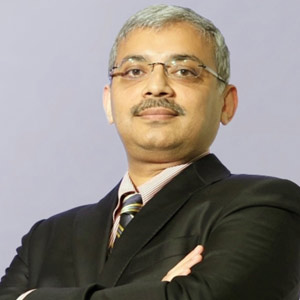THANK YOU FOR SUBSCRIBING

Towards achieving Vision 2041: Shaping upICT infrastructure to expedite digitalization
Rade Kovacevic, Chief Tehcnology Officer, Grameenphone


Rade Kovacevic, Chief Tehcnology Officer, Grameenphone
The telecom and ICT industry went through a revolution as Bangladesh’s telecom network expanded exponentially to cater to the spiralling demand for data and the internet. Moreover, the ongoing pandemic has compelled more people to opt for a more digital lifestyle, catalysing our goal of building a Digital Bangladesh.
The Telecom sector and Mobile Network Operators (MNOs) play a vital role in materialising the "Digital Bangladesh" vision with 4G services enabled nationwide. Mobile networks have been the country's driving force in the proliferation of information, allowing the citizens to access critical communication services and promoting technological advancements with expanded economic opportunities in the public and private sectors. In addition, connectivity improves the lives of many underserved citizens, bridging the digital divide in various aspects of life and every social tier.
Telecom infrastructure development needs to be accelerated with economic activity and everyday life depending more than ever on digital infrastructure. Optical fibre cable (OFC) is a critical component of that infrastructure and a crucial enabler for sustainable data growth to sustain this economic upturn, especially for universal broadband access. Optical fibre refers to the medium and the technology associated with the transmission of information. It is used for long-distance and high-performance data networking, and the internet revolution depends on fiberisation.
Since implementing the Nationwide Telecommunication Transmission Networks (NTTN) regulations and licensing regime in 2008, mobile operators haven't deployed and shared fibre infrastructure, while NTTN operators developed large fibre networks nationwide. On the other hand, MNOs are highly dependent on NTTN operators who struggle to meet expectations mainly due to the absence of QoS obligations and actual market competition in the fibre and transmission domain.
Currently, less than 15 percent of MNOs sites/towers are fibre-connected, and this number needs to increase fast to support country digitalisation, sustainable growth and new technology adaptation. For example, developed markets have a percentage of fibre connected sites above 30 percent.
We are on the brink of the Fourth Industrial Revolution, driven by technological innovations and 5G technology as its driving force. We/Bangladesh can't miss this plan, and the telecom industry would be ready and proud to take this strategic role, bringing the country's digitalisation to the next level.5G puts enormous demands on infrastructure, in particular fibre. So 5G development should make holistic, national strategic plans for fibre infrastructure, turning challenges into opportunities and successes. And if we follow learnings from countries who were most successful in 5G development, the recipe is simple: open up all available fibre infrastructure for the telecom sector / MNOs. All fibre infrastructure, whether telco or utility, private-owned or public-owned, needs to be made available for the telecom sector and MNOs in particular: this infrastructure needs to be robust, reliable, and highly efficient.
Government can facilitate this plan in two main areas. First, fibre infrastructure needs to be declared as a strategic national resource. It needs to be safeguarded against continuous damage, interruption and abuse (i.e. every man-made damage to fibre infrastructure should be investigated and punished if found guilty). And as a strategic national resource, it should be made available. Second, open market competition should be allowed in NTTN services by allowing MNOs and other telecoms / ICT operators to build and share fibre infrastructure. And to make this infrastructure available to all contributors to country digitalisation, focusing on reliability, quality and efficiency. Therefore Government/regulator has a critical role in bringing necessary formulation/adjustment in the policy and guidelines.
-
Optical fibre cable (OFC) is a critical component of that infrastructure and a crucial enabler for sustainable data growth to sustain this economic upturn, especially for universal broadband access
Weekly Brief
I agree We use cookies on this website to enhance your user experience. By clicking any link on this page you are giving your consent for us to set cookies. More info
Read Also












